There are a few places near Beijing where you can see the Great Wall, all with their
pluses and minuses. The closest, most famous, most heavily restored, and busiest of them is Badaling. You can get cheap tours that go here, but many of them spend little time at the wall and lots of time at souvenir shops where you're pressured to buy stuff. The second most popular and restored place is Mutianyu, which is supposed to be a decent compromise between accessibility, authenticity, and popularity. While there are less restored and more secluded areas of the wall, they are also much harder to access as a solo traveler.
When I went to Mutianyu, it was possible to go all the way there by public bus, via
bus 867. Although it did not run during the winter, it was possible to go from the terminal outside Donzhimen station all the way to the base of Mutianyu. Sadly, that service seems to have been eliminated in July 2014.
What remains is the express bus 916, which is faster and runs all year round, but doesn't go all the way to Mutianyu. Instead, it drops you off at Huairou, which is about 20 minutes away from Mutianyu. From Huairou you can share a car or minivan to Mutianyu for about 20 yuan per person, or you can take bus 936 and get off after the 8th stop (but be careful because it's not the final stop). Bus 916 runs every half hour or so from Dongzhimen's Public Transfer hub, which is a covered indoor terminal accessible from inside Dongzhimen station, and costs 12 yuan.
In all honesty, the need to transfer to a minibus or private car would change the calculus on where I would go: it was so much simpler with the 867 direct bus. Now, I would probably consider going to
Simatai or
Jinshaling, both of which are
as easy as the new 916 + car route. It takes longer to get there, and you can't really make them a half-day trip, but they are said to be more interesting and photogenic than Mutianyu.
The Great Wall Experience at Mutianyu
Once you're at Mutianyu, you really have to wonder just how bad Badaling is, if this is considered the less-touristed location: there's a cable car you can take to the top of the mountain where the wall is located, and a toboggan ride you can take down from the summit. It's not a particularly long or hard walk up to the wall—stretches of the wall are actually steeper—and once you reach the wall you find lots of vendors selling souvenirs but mainly things like beer and soft drinks, as well as chocolate bars and snacks. It's hot and humid, and unless you want to pay multiples of what you should pay, be sure to bring your own water and drinks from Beijing.
The smog that plagued Beijing was no better at Mutianyu, where visibility and contrast were in short supply. While light smog might be atmospheric, the conditions were pretty ridiculous.
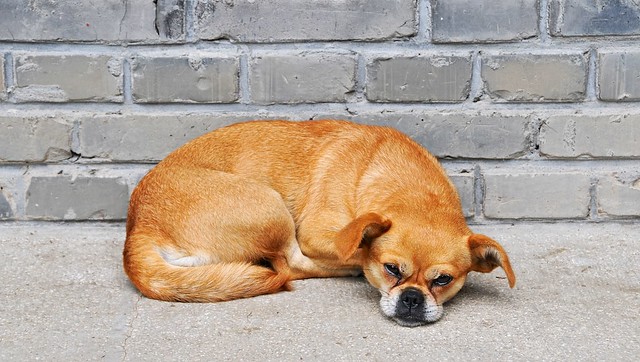 |
| A dog relaxes at the base of Mutianyu. |
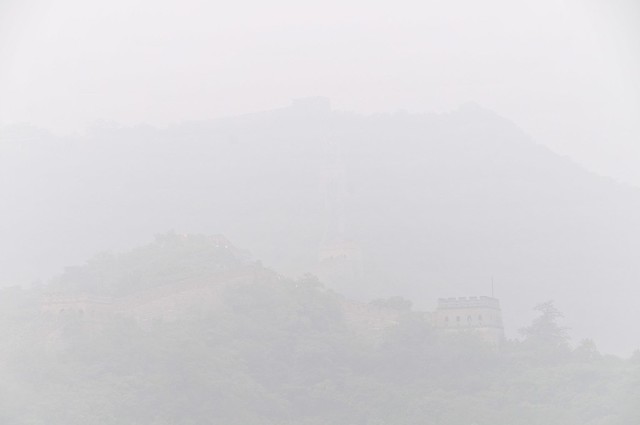 |
| I wonder what it looks like on a clear day—believe it or not, but there are actual towers in this picture. |
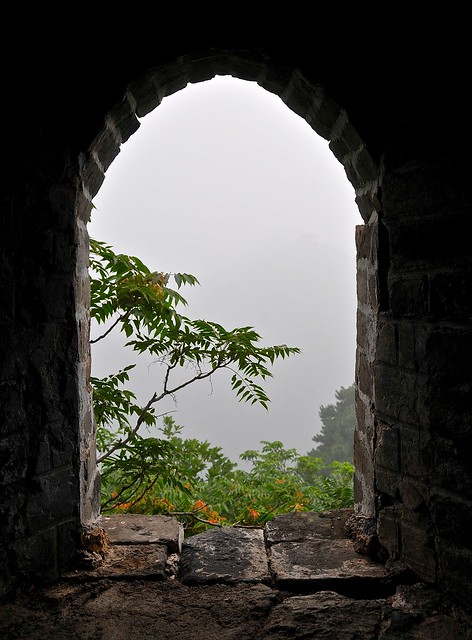 |
| And a landscape in the fuzzy white background. |
 |
| At least you can see something more than 5 meters away in this one. |
 |
| Looking up towards the eastern terminus of the restored wall. |
 |
The eastern limit of the wall, overlooking the unrestored and overgrown sections of the wall.
|
The eastern section of the wall is by far the busiest section. There were a lot of obnoxious young Western tourists there, doing their best to perpetuate the stereotype of the Ugly American. Shirtless guys, everyone talking really loudly and obliviously; the usual lack of consideration. In all honesty I was kind of happy to see them, as a reminder that Westerners can be every bit as inconsiderate and grating as the Chinese are.
It also gave me some insight as to what sorts of things the loquacious Chinese might be talking about with the strangers they chat with: if they're anything like these Americans who had been thrown together on this sightseeing expedition, they talk about nothing more consequential than the Chinese equivalent of college sports and their favourite TV programs (very topical when climbing the Great Wall, I'm sure).
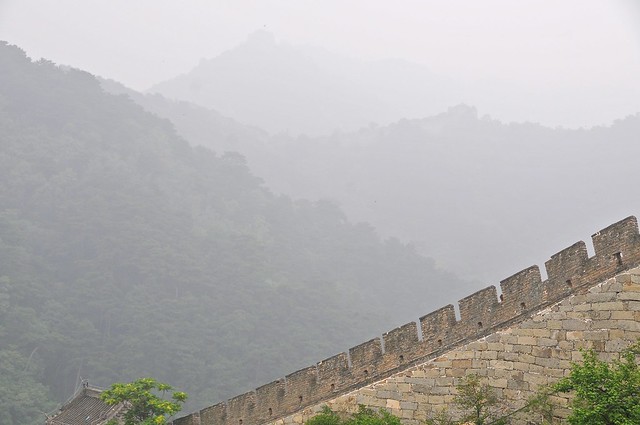 |
| The cable car and pathway deposit you at the bottom of this section of the wall. |
 |
| Looking out from a guard tower. |
 |
| One
of the vendors at the top of a steep section had a Chinese flag, and
would offer to take your picture for free. It was a good ice-breaker and
goodwill generator. |
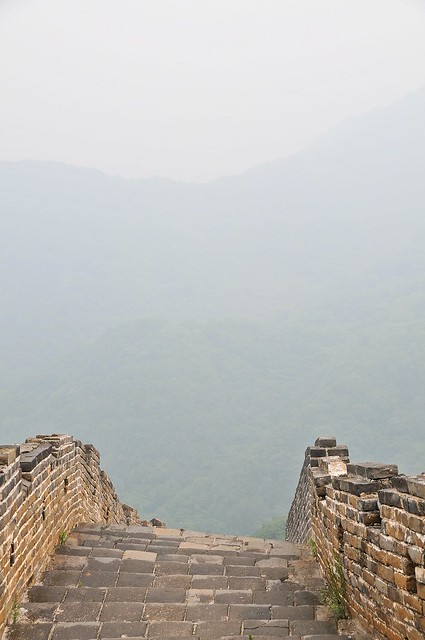 |
Top of the hill gives you a good view of the haze.
|
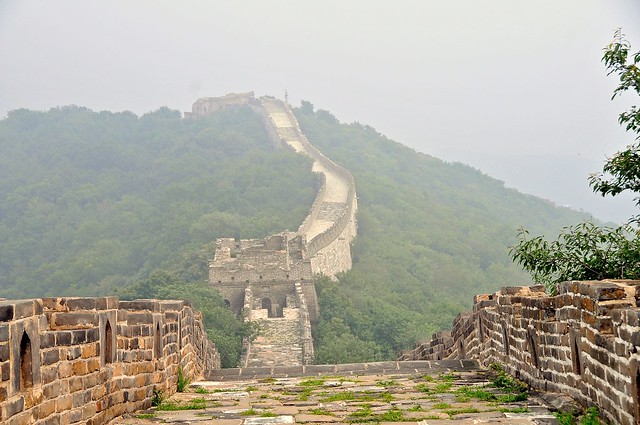 |
This was the other end of the
restored section. No one was here because it was the top of a long climb
and most people don't have enough time to go that far.
|
 |
On the way back.
|



















